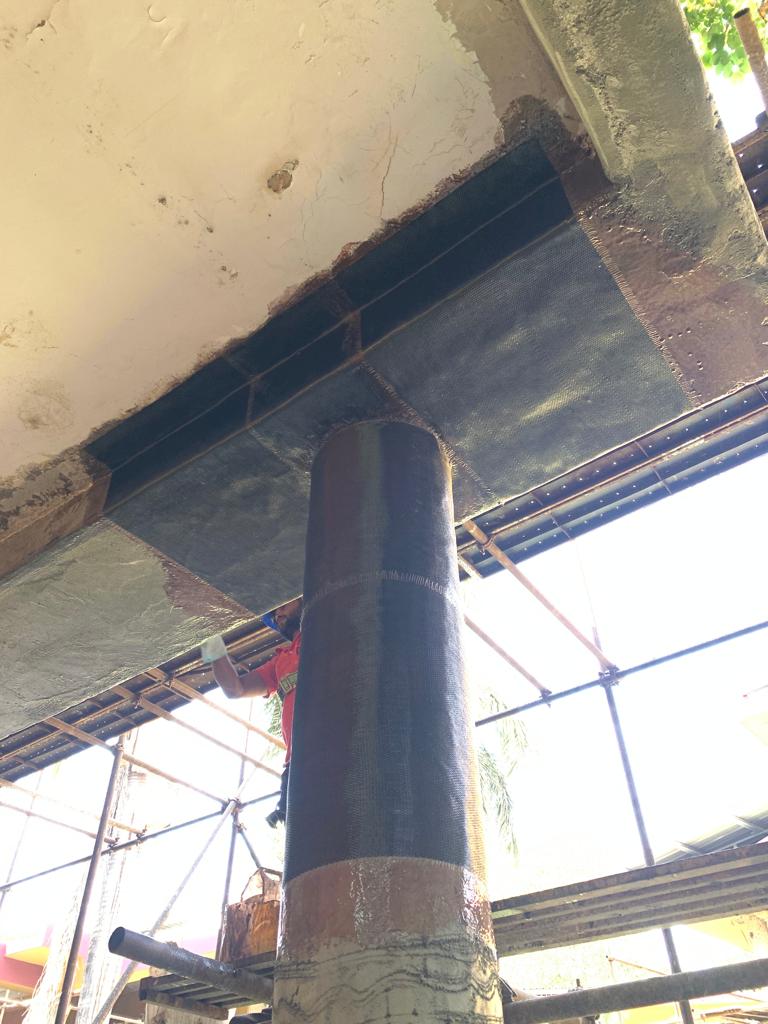In the field of structural engineering, flexural strengthening plays a crucial role in improving the bending capacity of concrete members such as beams and slabs. Over time, buildings experience load variations, environmental impacts, and material degradation. This process helps restore and enhance the load-bearing strength of structures, ensuring safety and durability. Engineers often apply advanced methods like carbon fiber wrapping or steel plate bonding to strengthen weak structural members effectively.
Why Flexural Strengthening Is Necessary
As buildings age, they face numerous challenges such as corrosion, cracks, or excessive deflection under increased loads. Flexural strengthening becomes essential to prevent structural failure and extend service life. Whether due to design errors, changes in usage, or deterioration, strengthening helps the structure meet modern performance standards. It is widely used in residential, commercial, and industrial construction to improve safety without the need for complete demolition or reconstruction.
Common Causes of Flexural Deficiency
Flexural deficiencies occur when a structural element fails to resist the required bending moments. Some common causes include inadequate reinforcement, poor-quality concrete, excessive loading, or design alterations. Environmental factors like freeze-thaw cycles and corrosion of steel reinforcement can also reduce strength. Flexural strengthening addresses these issues efficiently, ensuring the structural integrity of RCC beams, bridges, and slabs. Identifying the root cause is essential before implementing the right strengthening technique.
Popular Methods of Flexural Strengthening
Different methods are used depending on the structural condition and project requirements. Common techniques include the use of carbon fiber reinforced polymer (CFRP) sheets, steel plate bonding, and external post-tensioning. CFRP wrapping has gained popularity due to its high tensile strength, corrosion resistance, and lightweight nature. These methods not only enhance flexural capacity but also improve ductility and crack resistance, making them suitable for long-term performance improvements in reinforced concrete structures.
Carbon Fiber Wrapping in Flexural Strengthening
One of the most effective modern solutions for flexural strengthening is carbon fiber wrapping. In this process, high-strength carbon fiber sheets are applied to the tension zone of a structural member using epoxy resin. The bonded layer increases tensile capacity and distributes stresses efficiently. This technique is ideal for strengthening RCC beams, bridges, and slabs without adding extra load. It also offers advantages like quick installation, minimal disruption, and excellent durability against harsh environments.
Benefits of Flexural Strengthening
The main advantage of flexural strengthening lies in its ability to improve the load-carrying capacity of structures without altering their geometry. It allows engineers to extend the lifespan of aging infrastructure at a lower cost compared to reconstruction. Other benefits include enhanced structural performance, reduced maintenance costs, and increased safety for occupants. Strengthening also helps meet updated design codes, supporting the sustainability goals of modern civil engineering projects.
Flexural Strengthening for RCC Beams
RCC beams are among the most critical components in any structure, often exposed to bending stresses. Flexural strengthening of RCC beams involves adding external reinforcement or using fiber-reinforced polymers to resist tensile forces. The technique restores stiffness and prevents excessive deflection under loading. In urban infrastructure, where space and downtime are limited, engineers prefer externally bonded CFRP systems to ensure faster rehabilitation without disturbing the structure’s functionality.
Applications in Bridge and Infrastructure Repair
Bridges and highway structures often suffer from repeated traffic loads and environmental exposure. Flexural strengthening is widely used in bridge repair and retrofitting projects to enhance load capacity and performance. Carbon fiber wrapping and post-tensioning techniques are commonly applied to girders and decks. These solutions provide efficient restoration with minimal downtime, making them ideal for public infrastructure. Regular strengthening ensures long-term safety and reduces the chances of sudden failures.
Flexural Strengthening in Buildings
Many old residential and commercial buildings experience cracks, sagging beams, and decreased strength due to aging. Flexural strengthening allows property owners to reinforce these elements without major demolition. By applying fiber composites or additional steel supports, engineers can achieve greater stability. The process is also useful during building renovations when additional floors or heavy equipment are added. It’s a reliable, time-efficient way to upgrade existing structures for future use.
Difference Between Flexural and Shear Strengthening
While both processes aim to improve structural performance, flexural strengthening focuses on enhancing a member’s resistance to bending, whereas shear strengthening targets diagonal cracking caused by transverse forces. Flexural strengthening typically involves CFRP sheets applied along the length of beams, while shear strengthening uses wraps around the sides. A comprehensive rehabilitation plan often combines both methods for maximum effectiveness, ensuring a balanced and safe load distribution across the entire structure.
Inspection and Assessment Before Strengthening
Before applying flexural strengthening, engineers perform detailed inspections to assess structural damage, material quality, and load requirements. Non-destructive tests such as ultrasonic pulse velocity, rebound hammer, and core sampling help determine the extent of deterioration. Based on these findings, an appropriate strengthening method is chosen. Accurate assessment ensures that the strengthening technique addresses the exact cause of deficiency, leading to better structural reliability and efficient use of resources.
Steps Involved in the Strengthening Process
The flexural strengthening process follows a systematic approach starting with surface preparation, which includes cleaning and removing loose particles. The next step involves applying bonding agents or epoxy resin to ensure proper adhesion. Fiber sheets or steel plates are then positioned on the tension side of the member and cured under controlled conditions. Finally, quality checks and load tests are conducted to verify improvement in flexural strength and performance.
Flexural Strengthening Using FRP Systems
Fiber Reinforced Polymer (FRP) systems are among the most advanced materials for flexural strengthening. These composites combine strength, lightweight, and corrosion resistance, making them suitable for harsh conditions. FRP sheets can be easily molded to any shape, offering versatility in strengthening applications. Engineers use them for repairing columns, slabs, beams, and bridge decks. The long service life and easy application of FRP make it a preferred choice in structural rehabilitation projects.
Flexural Strengthening and Sustainability
In today’s construction practices, sustainability is a key priority. Flexural strengthening contributes to sustainable development by extending the lifespan of existing structures and reducing construction waste. Instead of demolishing and rebuilding, strengthening allows reuse of existing materials. This approach minimizes carbon footprint and promotes resource efficiency. With innovative materials like carbon fiber composites, engineers can achieve both structural safety and environmental responsibility in their projects.
Future of Flexural Strengthening in India
With rapid urbanization and infrastructure expansion, flexural strengthening has become an essential part of India’s construction industry. From metro bridges to residential towers, the need for structural rehabilitation is growing. The adoption of advanced FRP systems and improved construction standards is driving innovation in this field. In the coming years, more emphasis will be placed on sustainable strengthening methods that combine durability, cost efficiency, and environmental responsibility.
Flexural strengthening is a vital engineering process that enhances the bending capacity, safety, and lifespan of concrete structures. Through advanced techniques like carbon fiber wrapping and FRP systems, it provides sustainable and efficient solutions for modern infrastructure. As the demand for stronger and safer buildings increases, flexural strengthening will continue to play a crucial role in ensuring long-term durability and resilience in the built environment.


